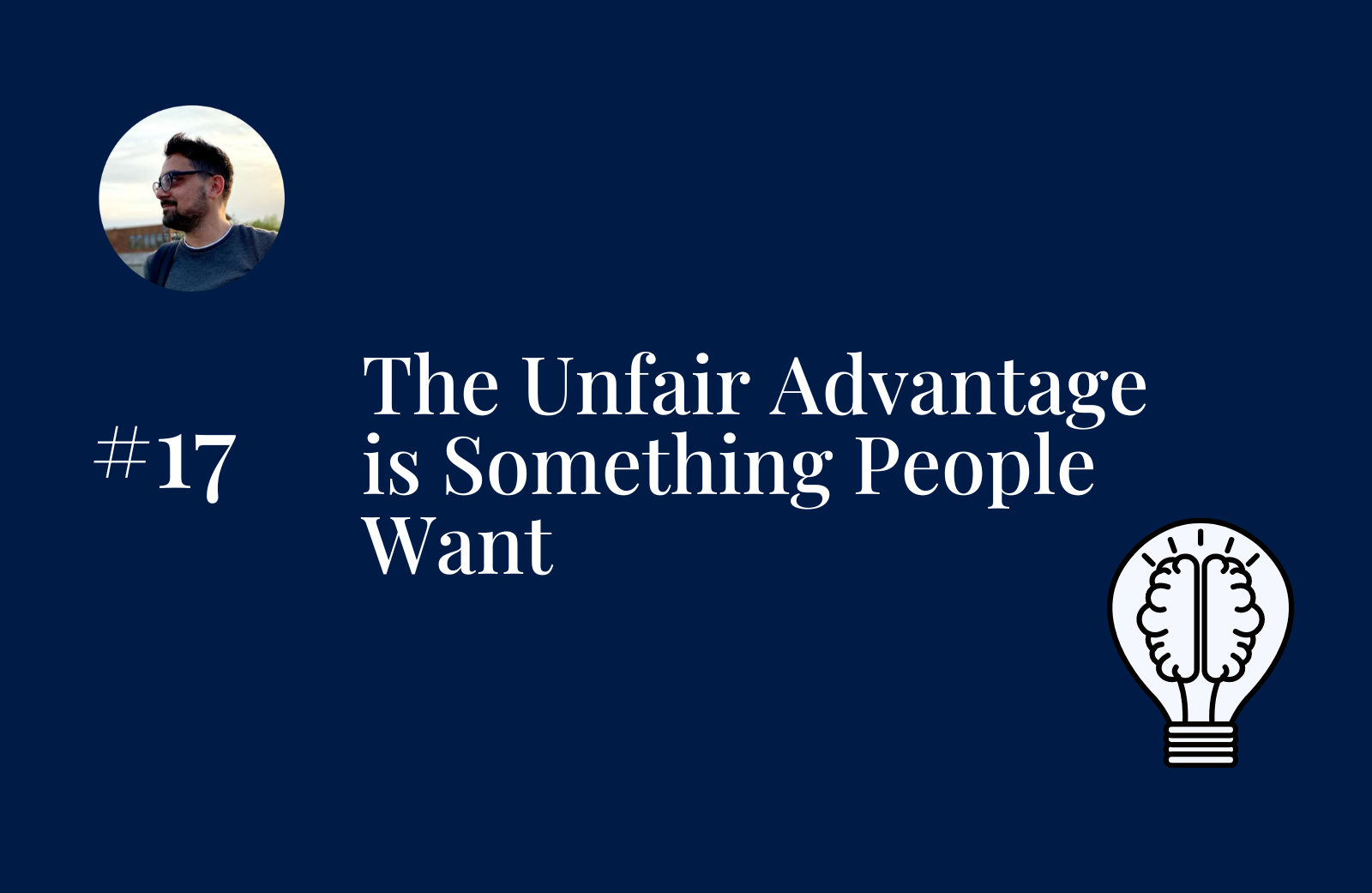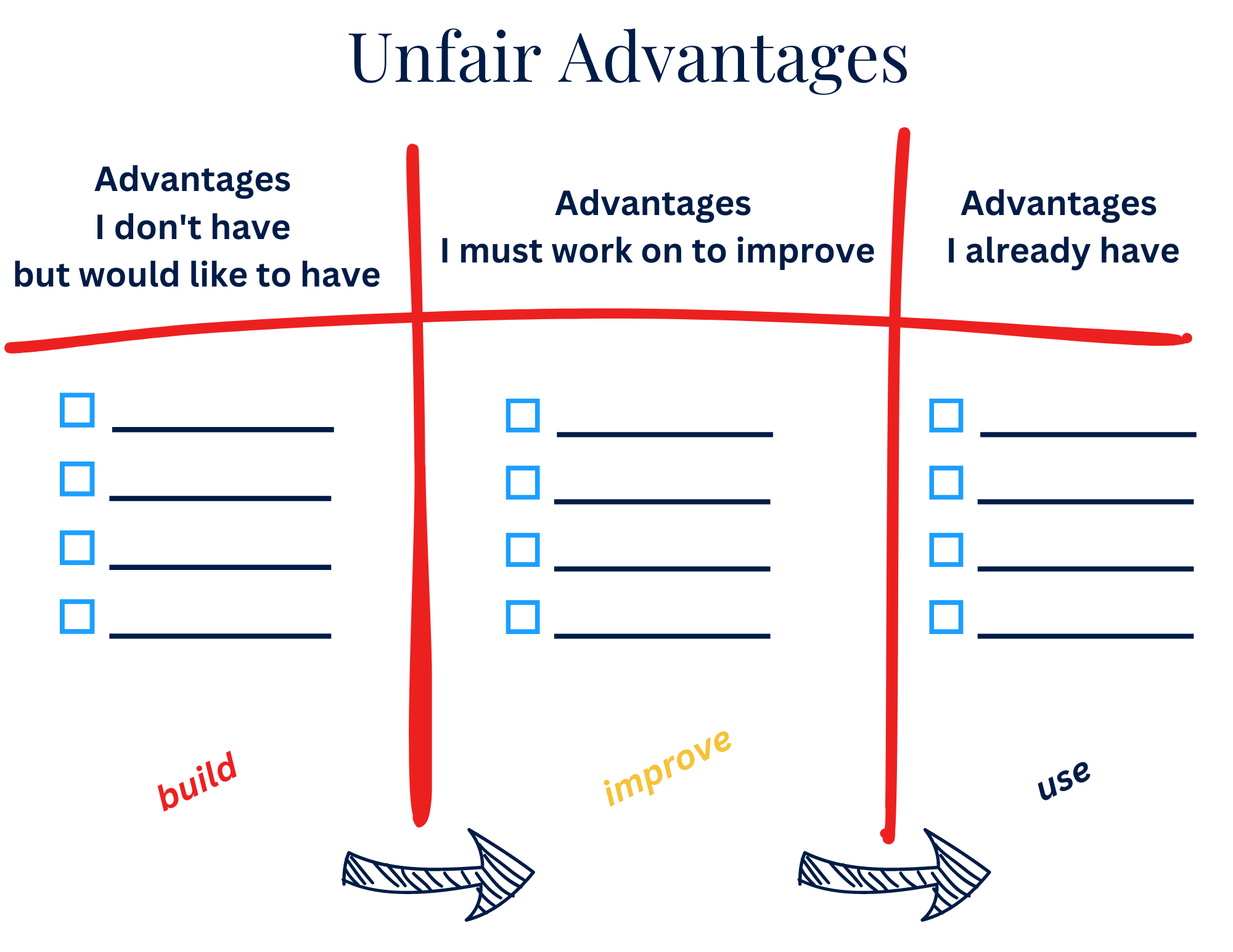
07 Aug How to Identify Your Unfair Advantage
Aug 7, 2024
When starting a business you have two options. Option one is to define the customer problem you want to solve, decide on the solution you have in mind, and then find your unfair advantage. Option two is to understand your unfair advantages before starting a new business.
The first approach definitely works, however, I find the second one more attractive because it can save you time when it comes to figuring out if it’s worth starting a new venture or not.
Why is This Approach Better?
Let me give you a simple example.
If you want to build a new social network, a significant advantage would be having a large network of people — a network you’ve built throughout the years, investing time, effort, and money.
This is an unfair advantage because you can invite everyone from your existing network once you build your new social network. Compared to a team of software developers who can certainly create an even better website and mobile application than you, attracting people to it would require them to spend a lot of money they might not have.
Therefore, knowing your unfair advantage allows you to quickly evaluate the likelihood of success in starting this business. Of course, if you don’t have that advantage, this approach will save you time because you’ll know not to invest effort in an unpromising venture.
How to Identify Your Unfair Advantage?
Remember one simple rule:
Your unfair advantage is something you have, that people want or need, but not everyone has.
Here are a few examples:
- Financial resources. Money is power. You’ve heard the expression: “He who pays the piper calls the tune.”
- Network. Building a network of people is a gold mine. It takes years and requires time, effort, and money, but eventually, it will help you build a business. This network can include investors, influencers, entrepreneurs, specialists in their area, etc.
- Audience. This includes your customers from another business of yours. For example, if you have an online store based in the UK, and you’d like to build another one, it’s relatively easy to let your current customers know that they can purchase from the other website. You’ve heard stories of online stores acquiring others. Sometimes the reason is simply to purchase their client database — because this is an advantage.
- Patent. If you hold a patent on a particular technology and you are the only one who can build and sell it on the market, this definitely gives you an advantage.
- Charisma. People are drawn to charismatic individuals. If you’re one of them, congratulations. People like you and want to emulate you. Selling your product is more likely compared to someone who lacks charisma.
You get the idea.
How Do You Identify Your Unfair Advantage?
It’s relatively simple:
- Take a notebook and a pen.
- Write down all the tangible and intangible assets you have, along with your knowledge and personal qualities. Take your time. Don’t rush. This process may take days or weeks. Keep in mind that everything you put on this list must match the definition of an unfair advantage: “Your unfair advantage is something you have, that people want or need, but not everyone has.”
- After you’re finished, review the list and remove those items which do not match the definition of an unfair advantage.
- Now, for each unfair advantage, carry out a thought experiment. Is there a business that could benefit from this advantage? This is an important step because you stress test your advantages. Remove those for which you’ve answered with “No”.
- Split them into two categories – “Advantages I must work on to improve” and “Advantages I already have”.
- Create a third category: “Advantages I don’t have but would like to have”. Here, write down unfair advantages you have in mind that you’d like to work on and build. For example, you may want to expand your network of people.
- From all three categories, pick only those advantages you consider important for your goals.
- For the advantages which are in the second and third categories, make a plan on how to improve or build these unfair advantages.
The result of this exercise is that you’re going to have a list of your unfair advantages and a plan to develop new ones.

The Truth
Building an advantage requires investing effort, money, and time. However, not everyone is willing to invest simply because the majority of people are lazy. Therefore the simple act of starting the process, combined with persistence, places you in a different position.
